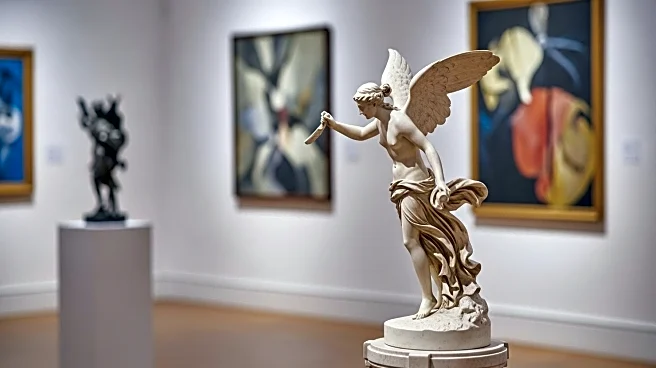What's Happening?
The UK is considering revising its art export thresholds, which have remained unchanged since 2002. The current system, based on the Waverley criteria established in 1952, requires export licenses for
cultural objects over 50 years old and of significant historical, national, or aesthetic value. The Arts Council England processes thousands of applications annually, but only a few items are retained for the nation. Critics argue that the thresholds are outdated, given the soaring values in the art market, and suggest increasing them to facilitate smoother trade and align with the government's goals of boosting foreign investment.
Why It's Important?
Revising the export thresholds could significantly impact the UK art market by allowing more fluid trade and strengthening international connections. This change could attract foreign investment and stimulate economic growth, aligning with the current Labour government's objectives. Additionally, it could relieve public institutions from the financial burden of acquiring deferred works, potentially leading to more strategic acquisitions of truly significant pieces. The proposal also highlights the need for modernizing policies to reflect current market conditions and support the art sector's development.
What's Next?
If the UK government decides to increase the export thresholds, it could lead to a more streamlined process for art exports, reducing the number of objects requiring licenses. This change might encourage corporate entities to invest in art, benefiting public museums through tax incentives. The government may also explore alternative funding methods to support UK entities in acquiring significant works. Stakeholders in the art market, including museums and collectors, are likely to engage in discussions to shape the future of export policies.
Beyond the Headlines
The debate over art export thresholds touches on broader issues of cultural heritage preservation versus market freedom. Increasing thresholds could shift focus to preserving only the most significant works, potentially altering the landscape of cultural conservation. This move might also influence international perceptions of the UK's commitment to cultural heritage, affecting its reputation in the global art community.












